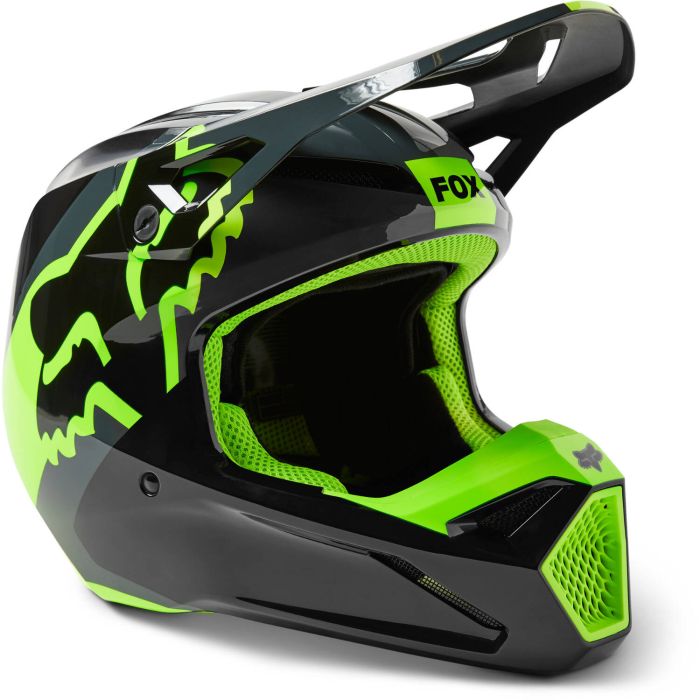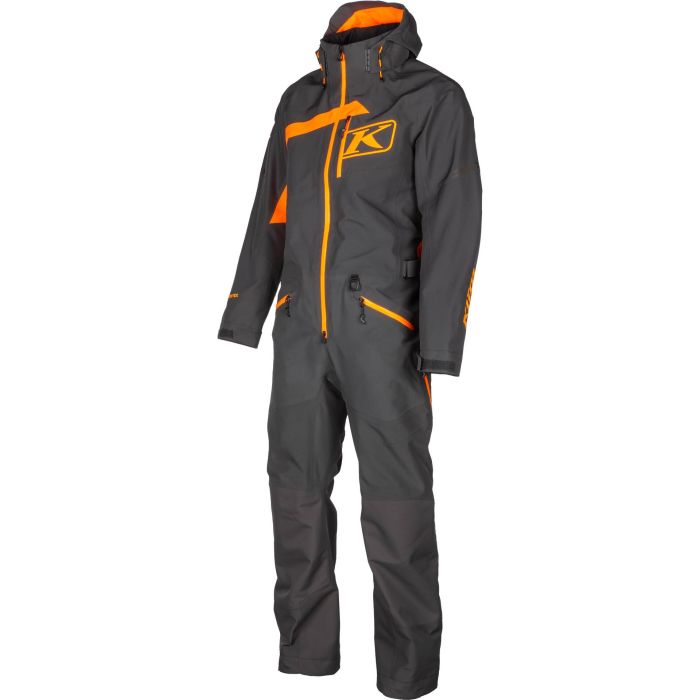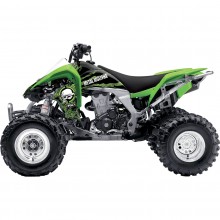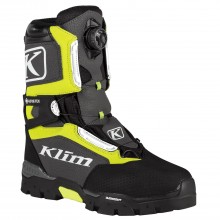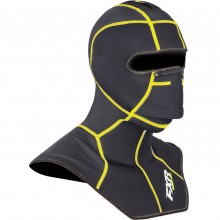
How to Legally Ride Off-Road in Canada
Ready to hit the trails? Not so fast! Turns out, there are laws you should know if you don't want the Mounties raining down on your parade.
Shop Now
Aug 29, 2022 — When I was 11 years old, I got my first motorcycle. It was a fiery red Honda XR100 that smelled like new plastic and newer freedom.
I spent years tearing up the mountain behind my parents' house — dodging hikers, bikers and Do Not Cross signs. The terrain was stitched together by a thousand fences and all of them were supposed to keep me out.
It didn't bother me at the time. I was four-feet-tall and cute as a button, and that felt like a carte blanche to ride wherever I wanted. If I ever crossed a park ranger there would be a fine to talk my way out of. So beneath a full-face helmet and the din of fourth gear, I would practice quivering my lip and stammering, "I'm sorry Ranger, I didn't know!"
At any rate, I never got to use my ready-made excuse. In a decade of riding I never encountered law enforcement. Not even once.

Park Rangers were uncommon in my hometown. Until I became one.
In recent years things have become a little more… stringent. Partially because I took a job in the Provincial Park and started chasing dirt bikers off the trails like a rabid herding dog. Oh, hypocrisy.
I was kicking a younger version of myself off the trails one morning, when he asked in the sweetest, cute-as-a-button voice: “Where am I supposed to ride then, dickhead?” At the time, my response wasn't so eloquent. But here's the formal version:
A Hyper-Simplistic Breakdown of Canadian Land Ownership
Less than 11% of our great country is private land . The answer is simple for this: if you own it, you can ride it however you damned well want to. Of course, most of us own a few square meters of yard space. And tearing around in a circle won’t make for a decent ride. Or happy neighbors.
The rest of Canada — 89% of rugged awesomeness – is Crown land. That means the Queen of England can ride it however she damn well wants to. But I don’t think Her Majesty uses the privilege very often.
Crown land is managed by federal and provincial governments, 41% and 48% of it, respectively. The government can do plenty of stuff with crown land. They can exploit its resources, lease it out or — and this is the part we care about — they can build roads, trails and parks on it.
Private Land Riding Laws
You may not own a large chunk of private land, but someone else certainly does. And that can make for some epic unrestricted riding. In particular, private forestry and agricultural properties contain endless networks of gorgeous off-road terrain. In places like Saskatchewan and PEI, nearly 50% of the province is devoted to these uses.
The trick for riding private land is simple — ask the owner. With their permission, nearly any rider can operate any vehicle, whether it’s registered and insured or not. Land owners will have to deal with things like liability, so don’t blame them for saying no. But if they say yes, consider it a huge favor and use their land responsibly.

Farm land makes for epic riding terrain, but only with the owner's permission.
Some motocross tracks and race courses are built on privately owned land. The principle is the same for these cases. The owner’s permission — which is normally managed by some kind of company — is required for use. In most instances, riding rights are conditional to an established criteria (rider age, vehicle type, receipt of payment, time limits, code of conduct, etc.)
Crown Land Riding Laws
Odds are, this is what you came to read about. Crown land is vast and it’s hard to go for a decent ride without crossing it.
The good news is, as large off-road riding organizations are growing and lobbying, more Crown land is being opened up for motorized use. This commonly includes hunting and fishing trails, forest service roads, disused rail beds, special off-road riding parks — that kind of thing. In some cases, it’s even legal to ride on the shoulders of federal and provincial highways. Likewise, municipal roads can be opened to off-road vehicles under certain by-laws.
Of course, almost every province and territory in Canada has enacted – or is currently enacting — laws to regulate this use. In most cases, any off-road vehicle on Crown land needs to be registered, licensed and insured. The government also requires things like decent mufflers, proper safety equipment and spark arrestors — the latter of which is great for not burning the forest down.
So far, so good. But now the bad news: certain ages of riders and types of vehicles will not be eligible for registration. For instance, riders under the age of 12 are often prohibited entirely. And below the age of 16, you'll normally have to pass some kind of competency test.
Equipment-wise, many closed-course competition MX bikes cannot be registered for Crown land use. This has to do with fire hazard mufflers and allegations that 2-strokes are bad for the environment .
While licensing, registering and insuring isn't heinously expensive, the whole thing could be a barrier for some low-budget riders.

Closed-course motocross bikes are fast, loud and often unacceptable to the government.
There are variations and exceptions to these laws. For example, they are much more relaxed in rural and northern communities where regulations are difficult to enforce . If you’re wondering about the specifics, the below source material for each province and territory is a good place to start.
To sum up, government land comes with government laws. Is that really surprising?
Punishments for Illegal Riding
If you ride without permission on private property, you're trespassing. This can warrant a small fine or — if you live in the United States — being shot dead.
Riding on Crown land without the relevant off-road license, registration and insurance can bring a cornucopia of fines. To give an example for Ontario:
Drive Off Road Vehicle on a Highway – minimum $500 fine Operate motor driven vehicle in Public Park – minimum $180 fine Drive No Insurance – minimum $5000 fine Drive Off Road Vehicle No permit – minimum $110 fine Drive Off Road Vehicle fail to wear proper helmet – minimum $110 fine Drive Off Road Vehicle no driver’s licence – minimum $325 fine Owner permits child under twelve to drive off road vehicle – minimum $110 fine.
As quoted from a Barrie Police notice.
That's right — riding without insurance carries a minimum $5000 fine in some places. For your average 13-year-old, that's the cost of the motorcycle plus a lifetime of paper route wages. I'm going to call it out — the punishment may be a tad out of proportion.
Of course, if you accidentally run over the little toe of a grumpy lawyer, your liability payments will be exponentially higher. Get insurance.

Look at this brazen criminal! Better slap a hefty fine on him before he kills somebody.
Tips for Finding Legal Riding Terrain
Ask a Ranger
Park rangers love the outdoors — probably more than you do. And believe it or not, they actually want you to get out and enjoy it. So if you have any questions about where you should and shouldn't be, a ranger will be happy to help.
Get a License and a Dual-Sport Bike
It’s useless for anyone under 16, and potentially complicated for anyone over it. But getting a motorcycle license is the most effective solution, bar none. You can ride the pavement between trail heads and you’ll be legal on nearly every dirt road.
And don’t worry, there are plenty of street-legal bikes that don’t sacrifice an ounce of off-road prowess. Check out the berserk KTM 350 and 500 EXC , or the similarly wild Husqvarna FE 350 S and FE 501 S .
Ask a Land Owner
As we already mentioned, private property can be ridden — without restrictions — at the owner’s consent. All they have to do is say yes, so it’s worth a try.
Join an Off-Road Riding Association
For a nominal fee (usually less than $100 per season), you’ll gain access to their trails, races, BBQs, group rides and lessons. It’s a great way to meet new friends, while also contributing to the expansion of motorized terrain.
You see, provinces are happy to allocate land to off-road riders. But they need to see collected, committed groups that lobby towards a common goal. This way, the government can ensure that the Crown land will be well-used and well-maintained.
So if you’re unsatisfied with the available terrain, joining a local off-road riding group is the best way to promote change. Links to the major provincial organizations can be found in my source material .
Make a Hobby of Cartography
Once you know your legal limits, a good map will help you ride without crossing them. So off-road riders should get really into maps. Stuff them into your pockets, tape them onto your gas tank, put them under your pillow — whatever floats your boat.

Think of how cool you'll look when you tell your friends "Couldn't have done it without topography."
Source Material
Government pages, legal documents, provincial riding associations — we get excited about that kind of thing around here. If this collection doesn't have what you're looking for, there’s undoubtedly more out there. Happy hunting.
- British Columbia: Off-Road Vehicle Registration – BCORMA Association
- Alberta: Off-Highway Vehicle Regulation – AOHVA Association
- Saskatchewan: All Terrain Vehicles Regulations – SATVA Association
- Manitoba: Off-Road Vehicles Act – ATVMB Association
- Ontario: Off-Road Vehicles Act – OFTR Association
- Québec: Loi sur les véhicules hors route – FQMHR Association
- Newfoundland: All-Terrain Vehicles Act
- New Brunswick: Off-Road Vehicle Requirements – NBDRA Association
- Nova Scotia: Off-Highway Vehicle Registration – NSORRA Association
- PEI: Off-Highway Vehicle Operation – ATV Federation
- Yukon: Off-Road Vehicle Requirements
- Northwest Territories: All-Terrain Vehicles Act
- Nunavut: All-Terrain Vehicles Act
Motovlog | How to Legally Ride Off-Road in Canada?

Related Articles

How to Ride a Motorcycle in the Rain
A little thunder and some droplets of water? Ain't nothin' to it for those who come prepared.

7 Problems & Solutions for Cold-Weather Riding
We've compiled a list of tips and tricks for those daring winter warriors.

Types of Motorcycle Helmets
There are 6 different types of motorcycle helmets out there. Pick the one that best suits your riding style.













